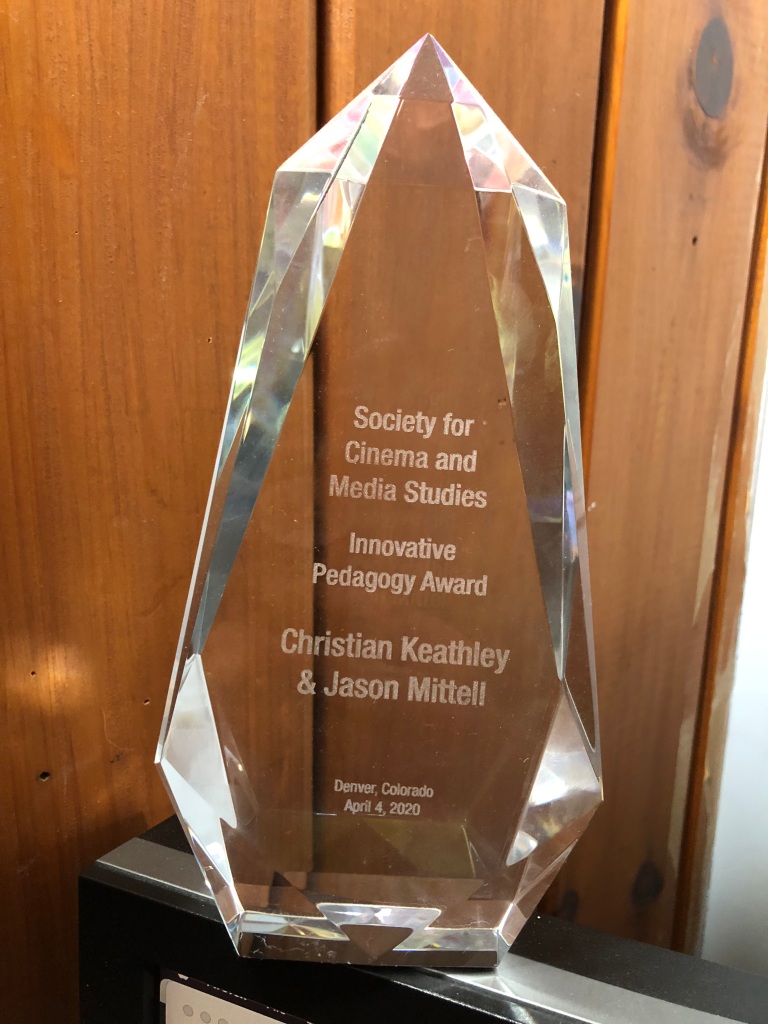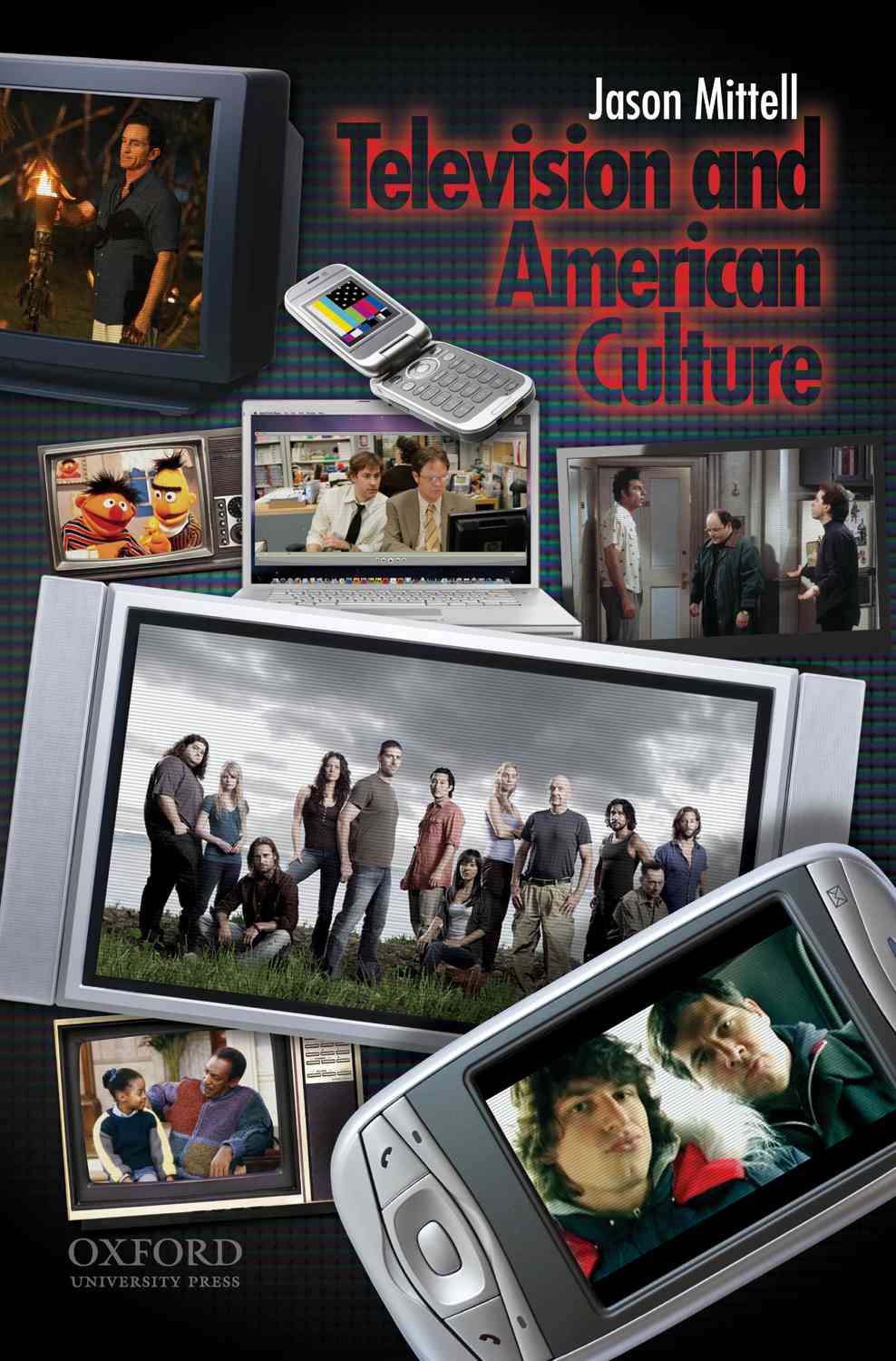A Bit of Good News
It’s been more than two years since I posted to this blog, but I’m back with some good news.
Obviously, it’s been a not-great couple of years of silence, although comparatively I have little to complain about personally or professionally. Things have sucked, but far less for me than for many people. But for 2022, I hope to try to make things suck less in part by communicating more – hence, back on the blog! (And if you want to pretend that I’m not reviving this throwback format and started a trendy newsletter instead, feel free to get an email subscription to the blog in the right sidebar…)
I write today with one big bit of good news gesturing toward the future, and a few smaller updates from the last couple of years. Today’s big news is that I received a NEH/Mellon Fellowship for Digital Publication to support my academic leave for Spring and Summer 2022, as I’ll be working on my audiovisual book, “The Chemistry of Character on Breaking Bad and Better Call Saul“! Dedicated readers might remember that I’ve been working on this project for awhile, launched during my last leave in 2018. Back then, it was solely focused on Breaking Bad, and I had ambitions to finish the project in 2020. However, 2020 had other ideas. So now I’m back on leave and tackling the project, which has expanded to include the prequel.
Back in 2018, I also applied for the NEH/Mellon fellowship (twice, actually), and despite the fact that the reviewer comments were uniformly excellent, I did not get funding. This year, I applied again, knowing that the odds were slim, so the news of my award just before Christmas was a huge surprise. Beyond my own personal pride and excitement, I am particularly gratified for what it signals that the NEH would fund this project—this fellowship specifically supports scholarship that results in a digital publication, spanning a wide range of fields and approaches. But based on the descriptions of funded projects, most work would be considered fairly “traditional” in terms of humanities methodologies and topics: digital editions of notable literary texts, history monographs with embedded multimedia, and the like. I presumed that the main barrier for projects like mine getting funding (given the reviewer praise) was that the larger NEH board was skeptical of either television studies as a worthwhile subfield of the humanities, videographic criticism as a legitimate mode of scholarship,** or (most likely) both. Thus I regard this award less as a single success for me than a broader signal of these dual legitimacies, and hopefully a sign that there are more opportunities for such work to be supported going forward!
** I should note that the NEH has certainly supported videographic criticism previously, particularly in funding our Scholarship in Sound & Image workshops. But those grants were through the Office of Digital Humanities, which tends to be more open to experimentation that the main NEH Fellowship program.
To celebrate the launch of my leave and fellowship, I made the following short video as part of the larger project, as well as a contribution to Ariel Avissar’s videographic TV Dictionary collection. These videos follow the straightforward parameters of choosing a word and exploring the juxtaposition between the word’s definitions and clips from a television series. Given the focus of my book, “character” was an obvious choice:
This piece joins the other videos I’ve published as part of the audiovisual book in progress – keep an eye out for more videos posting there in the coming months!
As promised, I have a few other updates and news to share from the past two years:
Speaking of the Scholarship in Sound & Image workshop, we had to cancel our scheduled workshops for 2020 and 2021, but are optimistically planning to run one for June 2022 (with required vaccinations, of course). If you are interested in coming to Vermont for “videocamp” to learn to make video essays, the application deadline is February 1.

One of the first COVID cancellations to hit me personally was SCMS in April 2020. It was particularly disappointing because it meant that Christian Keathley and I were not able to attend the conference to receive the society’s first Innovative Pedagogy Award, which we won for our collaborative work running the workshop, teaching videographic criticism undergraduates, and publishing our pedagogical work. We did get these snazzy awards mailed to us though…
While my research productivity during the COVID years has been excusably weak, I have had a few publications released during the blog’s unplanned hiatus:
- The revised edition of How to Watch Television was released just as COVID shut things down in Spring 2020 (again, another opportunity to celebrate at SCMS was lost). For this new edition, Ethan Thompson and I solicited 21 new chapters, each analyzing an episode or two of television to exemplify a critical approach—we gathered all new contributors (beyond me & Ethan), particularly trying to find work focused on a diverse array of programs and topics. We’re really proud of the results, and reports are that the new chapters work well in the classroom! We left around half of the original essays in the book, and as a bonus, moved all the “retired” first-edition essays to NYU Press’s website for open access. My own contribution to the new book is a chapter on Better Call Saul as a “prestige spinoff,” considering the tensions between televisual legitimacy and derivative work.
- The peer-reviewed journal article is not a form I’m particularly invested in, as most of my shorter-form writing tends to be for book projects (or once upon a time, blog posts!). But one of the publications I am most proud of came out in 2021 in the journal Digital Humanities Quarterly as part of a theme issue on audiovisual digital humanities: “Deformin’ in the Rain: How (and Why) to Break a Classic Film.” A sequel of sorts to my chapter “Videographic Criticism as a Digital Humanities Method,” this new essay expands my thoughts on the possibilities of videographic deformations to unlock new ways of engaging with media. The essay contains more than a dozen examples of deformations of Singin’ in the Rain, and written commentary on the processes and outcomes of these experiments. If videos like this intrigue you, definitely check out the essay!
Beyond that book and essay (which required a level of labor rivaling a short book!), my other work is either still in-progress, or the less tangible realm of teaching, chairing a department, and parenting during a pandemic. It’s been quite a couple of years! But I hope to keep this blog updated with some more thoughts about ungrading, sharing some of my students’ excellent work as writers and videographic critics, and new videographic content of my own (plus some of the “just TV” thoughts in the site’s title – maybe with my reaction to the upcoming conclusion to Station Eleven?). Stay tuned!
Filed under: Academia, digital humanities, Meta-blogging, Publishing, Sabbatical, Television, Videographic Criticism | 1 Comment
Tags: breaking bad, videocamp, videographicBB
random thoughts from media scholar Jason Mittell
-
Join 410 other subscribers
check out my books:
 Narrative Theory and ADAPTATION.
Narrative Theory and ADAPTATION.
 Complex TV: The Poetics of Contemporary Television Storytelling
Complex TV: The Poetics of Contemporary Television Storytelling
 How To Watch Television
How To Watch Television
 Television & American Culture
Television & American Culture

Genre and Television: From Cop Shows to Cartoons in American Culturerandom post
-
Academia Books Complex TV Conferences Copyright digital humanities Fair Use Fandom Film Genre MediaCommons Media Politics Media Studies Meta-blogging Middlebury Narrative New Media Not Quite TV Open Access Press Publishing Teaching Technology Television TV Industry TV Shows TV Textbook Videogames Videographic Criticism Viewers
Recent Comments
-
Recent Posts
- More Evidence that AI Excels at Generating Bullshit
- Some Interesting Limits to AI Film Criticism
- Introducing Characters in BREAKING BAD
- Some Videographic Updates
- Sympathizing with Storytelling in BREAKING BAD
- Media Mirrors: A New Website
- The Sounds of Silent Mike
- Breaking Genre, or how to categorize Breaking Bad
- Skyler’s Nightmare
- Skyler’s Story: A Videographic Miniseries
Archives
Top Clicks
Top Posts
Blogroll
- Antenna
- Bordwell & Thompson
- Category D
- Celebrity Gossip, Academic Style
- Convergence Culture Consortium
- Cultural Learnings
- Dr. Television
- Ephemeral Traces
- Film Studies for Free
- Flow
- Graphic Engine
- Henry Jenkins
- Ian Bogost
- Interface Aesthetics
- jill/txt
- Karen Hellekson
- MediaCommons
- News for TV Majors
- Online Fandom
- Planned Obsolescence
- the chutry experiment
- The Extratextuals
- Timothy Burke
- zigzigger




One Response to “A Bit of Good News”